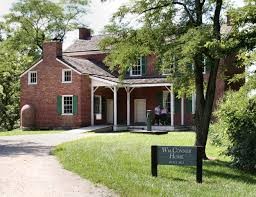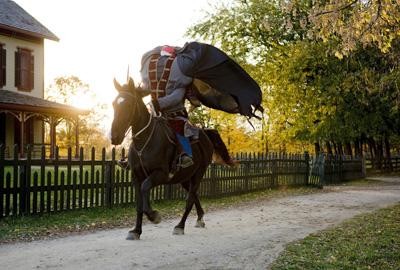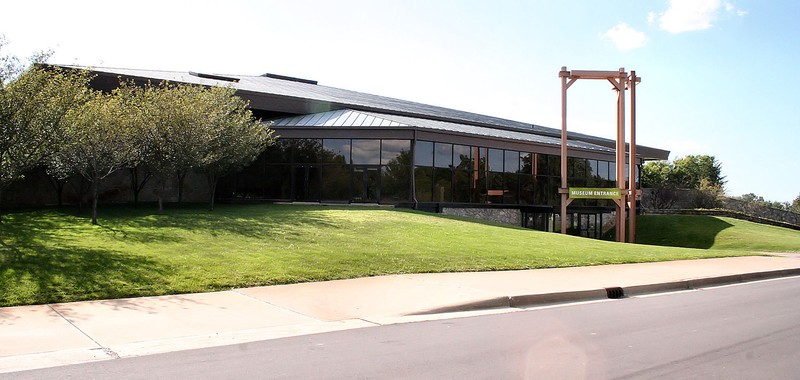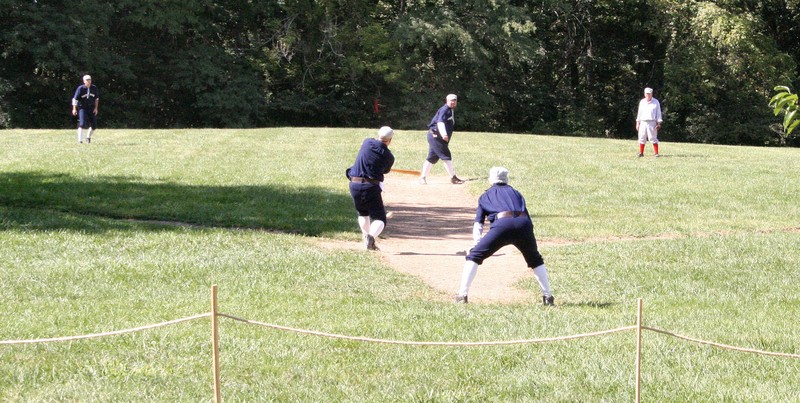Conner Prairie Interactive History Park
Introduction
Text-to-speech Audio
Conner Prairie is an Interactive History Park, or living history museum, in Fishers, Indiana, that preserves the William Conner home, which is listed on the National Register of Historic Places. It recreates pioneer life in the 1830s, but also has an 1850s hot air balloon and a Civil War program. The park spans 800 acres and five different sections that represent different time periods of early 19th century Indiana life. It is also a non-profit and a member of the Smithsonian Affiliates Program, connecting it to other museums throughout the country.
Images
The Conner House

School trip going through the park

Headless Horseman haunting the park during Halloween

Museum as it appears today

1886 Baseball demonstration at the park

Undated portrait of William Conner

Backstory and Context
Text-to-speech Audio
The oldest building at the Conner Prairie Interactive Park is the William Conner House, a two-story brick building built in 1823. William Conner was a fur trader who later became an investor and politician. He first bought the land in 1820 after the Lenape, a Delaware tribe living in Indiana, were forced to move west. Among the evacuated Native Americans was Conner's Lenape wife, Mekinges, and their six children. Conner quickly remarried, had ten more children, and built the Conner house. The family lived in the house until the 1870s. The house was bought by Eli Lilly in 1935 and turned into a museum. Over the next several decades, the house and surrounding lands grew into the living history museum that it is today.
Conner Prairie has no expanded into a huge village with dozens of ways to immerse yourself into history. In the Prairietown section, visitors can wander through homes and shops while costumed interpreters teach them about carpentry, carding wool, or cooking supper in a hearth. Period dressed farmers demonstrate their trade with real farm animals such as sheep, chickens, and cows. Near the Prairietown section is the Lenape Indian Camp, where visitors can learn about the way of life of the Lenape in the early 1800s. There is also a Civil War experience, where visitors learn about Morgan's Raid, a famous Confederate raid into Indiana that happened in 1863.
Along with everyday historical activities happening around the living history village, like farming, cooking, and crafting items, there are also many special events happening throughout the year. There are hearthside suppers in the winter, candlelight tours at Christmastime, lambing in the spring, and a certain Headless Horseman that goes roaming about on Halloween. Conner Prairie is a definite destination for families that want to educate their children about 19th century life, and is a fun tourist spot history buffs of any age.
Conner Prairie has no expanded into a huge village with dozens of ways to immerse yourself into history. In the Prairietown section, visitors can wander through homes and shops while costumed interpreters teach them about carpentry, carding wool, or cooking supper in a hearth. Period dressed farmers demonstrate their trade with real farm animals such as sheep, chickens, and cows. Near the Prairietown section is the Lenape Indian Camp, where visitors can learn about the way of life of the Lenape in the early 1800s. There is also a Civil War experience, where visitors learn about Morgan's Raid, a famous Confederate raid into Indiana that happened in 1863.
Along with everyday historical activities happening around the living history village, like farming, cooking, and crafting items, there are also many special events happening throughout the year. There are hearthside suppers in the winter, candlelight tours at Christmastime, lambing in the spring, and a certain Headless Horseman that goes roaming about on Halloween. Conner Prairie is a definite destination for families that want to educate their children about 19th century life, and is a fun tourist spot history buffs of any age.
Sources
http://www.connerprairie.org/
Conner Prairie. "1863 Civil War Journey". 1863 Civil War Journey: Raid on Indiana. Conner Prairie.
William Conner Farm Architectural Drawings Collection, a digital collection of site plans and architectural drawings created by architect Robert Frost Daggett of the William Conner Farm.
"Conner Prairie to Launch New $4.3 Million Exhibit". Inside Indiana Business. December 1, 2010
Allison, Harold (©1986, Harold Allison). The Tragic Saga of the Indiana Indians. Turner Publishing Company, Paducah.
Bodenhamer, David J. (1994). The Encyclopedia of Indianapolis. Indiana University Press. p. 471
Sarah's Family Tree: Information about William Conner
Conner Prairie. "1863 Civil War Journey". 1863 Civil War Journey: Raid on Indiana. Conner Prairie.
William Conner Farm Architectural Drawings Collection, a digital collection of site plans and architectural drawings created by architect Robert Frost Daggett of the William Conner Farm.
"Conner Prairie to Launch New $4.3 Million Exhibit". Inside Indiana Business. December 1, 2010
Allison, Harold (©1986, Harold Allison). The Tragic Saga of the Indiana Indians. Turner Publishing Company, Paducah.
Bodenhamer, David J. (1994). The Encyclopedia of Indianapolis. Indiana University Press. p. 471
Sarah's Family Tree: Information about William Conner
